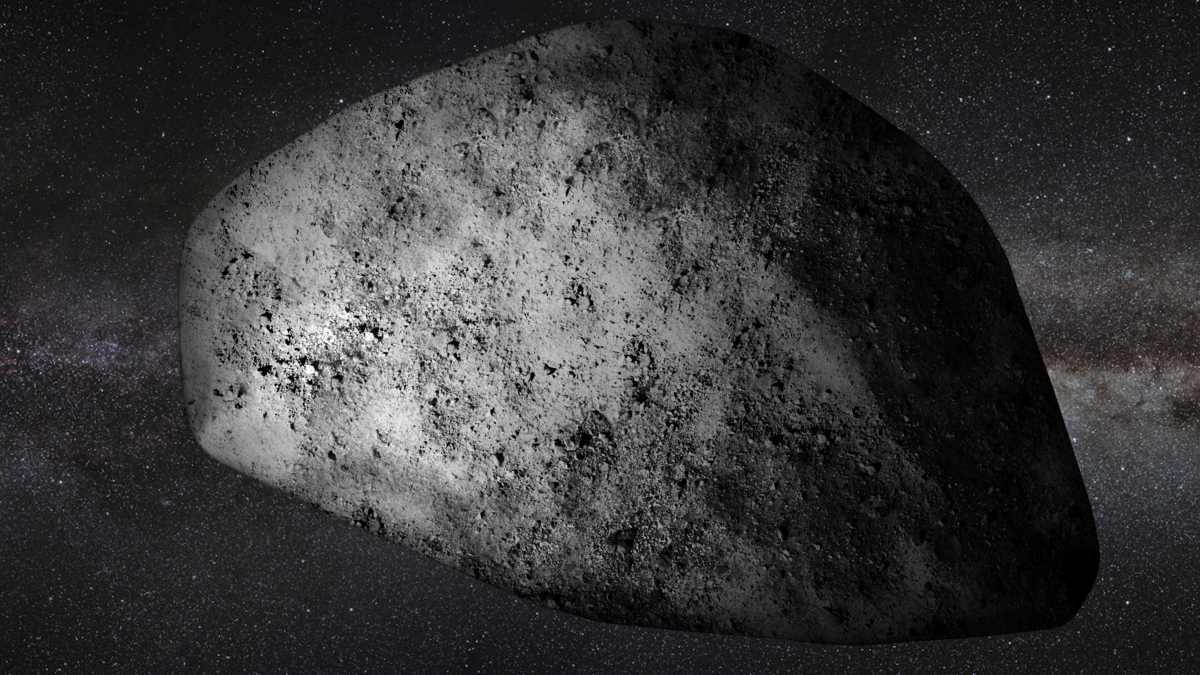16.04.2024

Artist's impression of the asteroid (99942) Apophis. Credit: The Planetary Society; CC BY-NC 3.0
In 2029 the asteroid once considered the most probable to strike the Earth will fly uncomfortably close to the planet’s surface.
Spanning 335-375m, asteroid 99942 – dubbed ‘Apophis’ after the Egyptian god of chaos – was discovered in 2004 by astronomers from the Kitt Peak National Observatory in Tucson, Arizona. Initially, it was assessed as being a 2.7% chance of impacting Earth in 2029, 2036 or 2068.
In the years since, though, observations of Apophis’ orbit around the Sun have led astronomers to reassess those changes: no impact is expected to occur within the next 100 years.
Still, Near Earth Asteroids like Apophis pass, by definition, close to our planet. None (at least on record) have passed as close as Apophis will in April 2029.
How close? With the tug of Earth’s gravity working on it, Apophis will duck inside the orbits of certain geostationary satellites at about 32,000km. This act will substantially alter the asteroid’s subsequent orbit.
Apophis currently has a narrower orbit around the Sun than the Earth, completing a single orbit in about 0.9 Earth years. But after its close call on 13 April 2029, it will begin a longer 1.2 Earth-year route around the Sun.
No risk, but a good study opportunity
It might pose no risk to Earth for at least a century, but Apophis’ proximity provides a unique target for astronomical study.
Already, groups like NASA and the European Space Agency (ESA) have conducted complex studies on target asteroids, including experiments to change the orbit of such objects like the Double Action Redirection Test (DART) mission.
Neither agency is proposing to deviate Apophis’ trajectory given an impact won’t happen this time around, but both have survey missions in the works.
NASA intends to repurpose the OSIRIS-Rex mission that visited and sampled the asteroid Bennu for the assignment. Christened OSIRIS-APEX, this mission will rendezvous with the asteroid as it exits its close pass and measure the deformation that occurred on its surface after being pinched by Earth’s gravity.
ESA has also confirmed it will look at several science opportunities to study the asteroid as it zips past.
One – Satis – will launch a year before Earth arrival and will release a toaster-sized cubesat into orbit around Apophis in February 2029.
Another – the Rapid Apophis Mission for Security and Safety (‘Ramses’) – will adapt some of the instruments on board ESA’s Hera mission, which will survey the aftermath of the DART experiment in December 2026.
Ramses will also reach Apophis before its Earth pass and deploy 2 cubesats into orbit to photograph and measure data about the object.
Quelle: COSMOS
